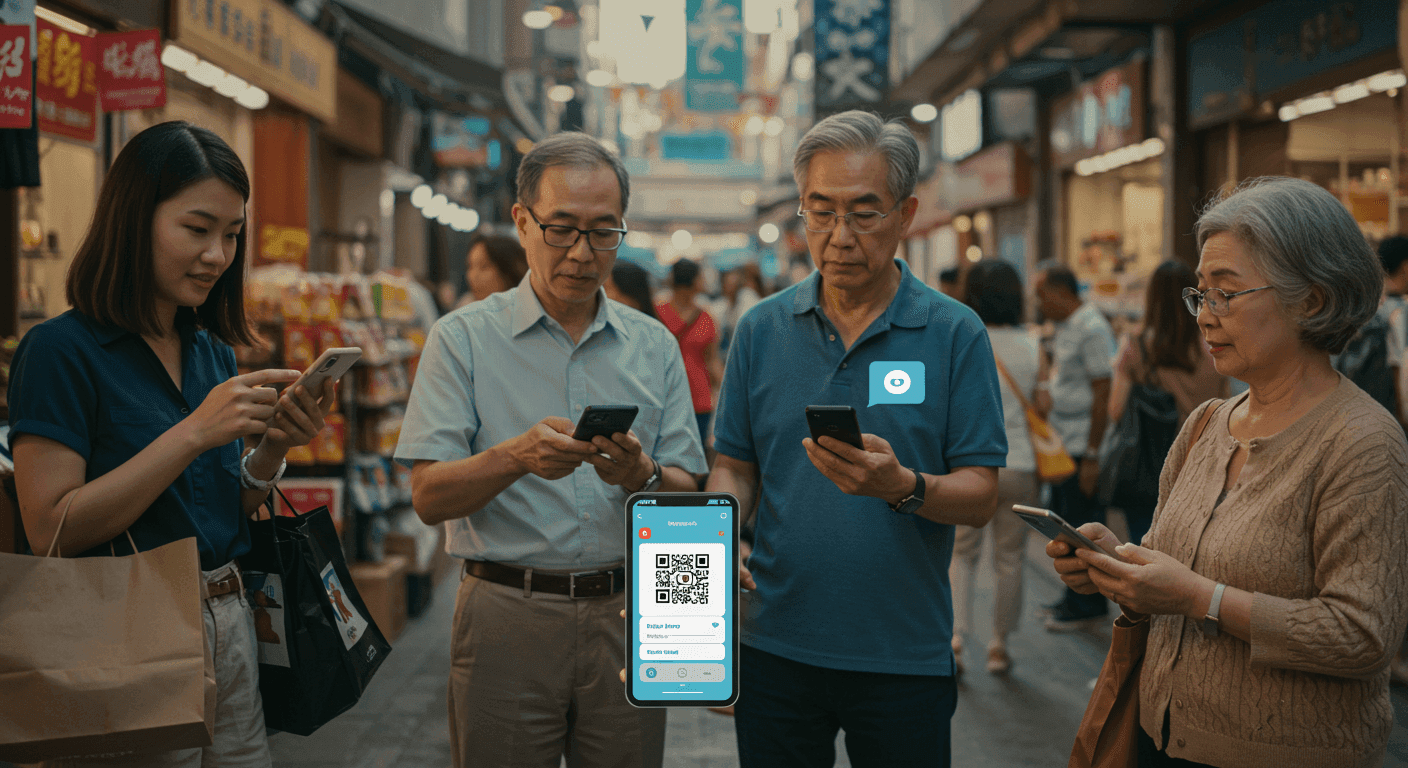Why are so many people sending money through messaging apps these days?
Traditional payment methods often take too long, need extra apps, or come with hidden fees. This makes quick and simple money transfers harder than they should be.
More people are getting tired of switching between apps just to pay a friend, shop online, or buy something from a small seller. It’s even more frustrating when payments don’t go through or the app crashes.
Now, payments inside messaging apps are changing that. They let people send money just like sending a text. It’s fast, simple, and already built into apps many people use every day.
What Are Messaging App Payments?
Messaging app payments allow users to send and receive money directly through their messaging platform.
Popular apps like WhatsApp, WeChat, and Facebook Messenger have integrated payment features that enable users to make transactions without leaving the chat window. You can pay friends, shop online, or even buy services - just by typing a message.
For example, in WeChat, users can transfer funds to one another or even pay for services like meals or transportation, all while chatting. This seamless integration makes it much easier for people to handle transactions in their daily conversations. In fact, these payment systems are becoming so intuitive that many users might not even realize they’re using them!
Why Are People Using Messaging Apps to Send Money?
Convenience and Speed:
One of the biggest reasons people are adopting messaging app payments is convenience. Instead of having to open a separate banking app or switch between different platforms, users can make a payment right from the same app they use to text their friends or family.
This means no more hassle of logging in to different apps or filling out lengthy forms. A few taps, and you’re done.
No Need to Switch Between Apps:
The simplicity of using a single app for everything - chatting and paying - has made messaging apps a go-to for many. You don’t have to juggle between apps, and the payment process feels natural and straightforward.
With so many people already using these messaging platforms daily, it’s no surprise that payments have seamlessly joined the mix.
Built-In Contact Lists Make It Easy:
Since messaging apps come with built-in contact lists, sending money is as simple as selecting a contact from the chat. You don't need to remember account numbers or any complicated details.
This simplicity is another reason why messaging app payments are becoming a preferred method for transferring funds.
The Global Growth of Messaging Payments
Rising Adoption Rates:
Messaging app payments are no longer just a trend - they’re growing at a rapid pace. According to Statista, WeChat alone had over 1 billion active users by 2023, with a significant portion using the app for payments.
This is a clear sign of how widely adopted these payment systems are becoming.
Leading Countries:
Countries like China and India are at the forefront of this shift. In China, WeChat has become so integrated into daily life that it’s hard to find someone who doesn’t use it for payments. Meanwhile, in India, WhatsApp Pay is gaining traction, with millions of users already making transactions within the app.
Messaging app payments are making a huge impact, especially in emerging markets where digital payment adoption is skyrocketing.
Popularity Among Younger Users:
Younger generations are especially fond of these payment methods. Since they are already accustomed to digital communication through messaging apps, using them for payments feels familiar and comfortable.
As digital natives, they are quick to adopt anything that makes their lives easier, and in-app payments are a natural fit.
Safety and Security in Messaging App Payments
When it comes to handling money, security is a major concern. Messaging app developers know this, and they’ve taken steps to make these payments as safe as possible.
Two-Factor Authentication and Encryption:
Most messaging apps that offer payment features use strong security measures like encryption and two-factor authentication (2FA) to protect users.
Encryption ensures that your payment information is secure while 2FA adds an extra layer of protection by requiring users to verify their identity with something more than just their password.
User Trust and Growing Reliability:
As these messaging apps grow in popularity, so does the trust users place in them. Since many people use these apps daily for personal communication, they are already comfortable with the platform.
Knowing that their financial transactions are just as secure as their messages makes the idea of paying via messaging apps feel safe and reliable.
Businesses and Messaging Payments
Messaging app payments aren’t just beneficial for individuals - they’re also changing the way businesses interact with customers.
Small Shops and Sellers Using In-App Pay Features:
Small businesses are increasingly using messaging apps to facilitate transactions. Instead of relying on traditional point-of-sale systems or online checkout platforms, they can accept payments directly within the chat.
This makes it easier for them to process payments and connect with customers in a more personal way.
Easy Checkout Inside Chats:
Imagine being able to shop and pay for something without leaving the conversation. Messaging app payments make this possible, allowing businesses to streamline their checkout process.
Whether you’re buying a gift or paying for a service, the experience is quick and painless, all within the same app.
Customer Satisfaction and Faster Deals:
The ease of using messaging apps for payments leads to faster transactions, which means happier customers. For businesses, this also means more sales and quicker turnaround times. It's a win-win for both parties.
Messaging Apps vs Traditional Banking
So, how do messaging app payments compare to traditional banking apps? Here’s a quick look:
Faster and More Accessible:
Unlike traditional bank apps that might require multiple steps to complete a transaction, messaging app payments are fast and easy.
Whether you're sending money to a friend or paying for a product, the entire process happens in seconds without any extra steps.
Lower Fees and Real-Time Speed:
Traditional banking methods often come with high fees or long waiting periods.
Messaging app payments, on the other hand, typically come with fewer fees and quicker processing times. This makes them an attractive option for both individuals and businesses.
The Future of Payments Is in the Chat
The future of payments seems to be headed straight to our chats. With more people relying on messaging apps for daily communication, it’s only natural that these platforms are becoming the center for handling money as well.
Predictions for Growth:
As more users in emerging markets gain access to smartphones and internet connectivity, messaging app payments will continue to grow. It’s expected that by 2025, billions of people will be making payments through messaging apps.
Integration with More Services:
Messaging apps are constantly evolving, and it’s likely that they will continue integrating more services, such as bill payments, ticket bookings, and even investing, all within the chat. This will make messaging apps the one-stop shop for everything.
Impact on Banks and Digital Wallets:
With the rise of messaging app payments, traditional banks and digital wallets may have to adapt or risk becoming obsolete. In the future, users may prefer the simplicity and convenience that messaging apps offer, and that could change the entire payments landscape.
Final Thoughts
Messaging app payments are quickly becoming the new standard for transactions, thanks to their ease of use, speed, and security. As more people adopt these methods, it’s clear that they’re not just a passing trend - they’re here to stay.
Whether you’re sending money to a friend or shopping online, the future of payments is right at your fingertips - inside your favorite messaging apps.
FAQs
Are messaging app payments secure?
Yes, most messaging apps use strong security measures like encryption and two-factor authentication to keep your payments safe.
Can I use messaging apps for international payments?
Yes, many messaging apps allow you to send money internationally, though availability may vary depending on the app and region.
Are there any fees for using messaging app payments?
Some messaging apps charge small fees, but many offer free transactions, especially for peer-to-peer payments.





